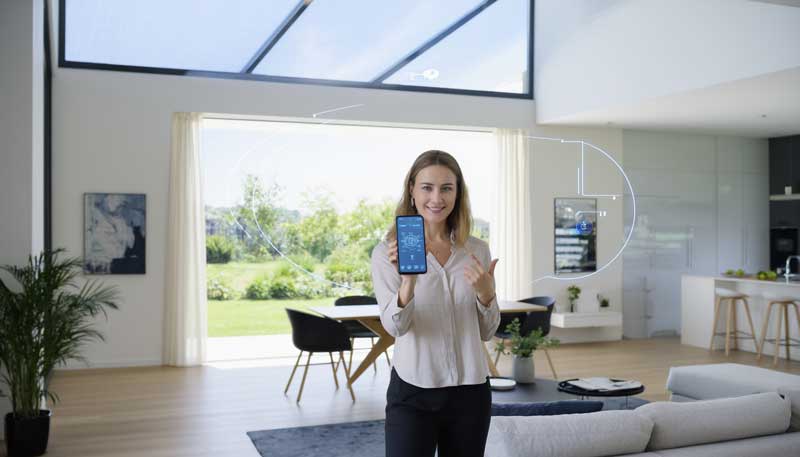Home ➢ Energy Efficiency
How to Make Your Home More Energy Efficient with Smart Technology

Energy efficiency isn't just about saving money on utility bills—it's about creating a more comfortable living environment while reducing your environmental impact. Smart technology has revolutionized home energy management, making it easier than ever to optimize your energy usage without sacrificing comfort or convenience.
The key to effective energy efficiency lies in understanding where your home uses the most energy and implementing smart solutions that automate optimization. From intelligent heating and cooling to smart lighting and appliance management, technology can significantly reduce your energy consumption while often improving your quality of life.
Smart Heating and Cooling: The Biggest Impact
Heating and cooling typically account for 40-50% of home energy usage, making this the most important area for efficiency improvements. Smart thermostats learn your schedule and preferences, automatically adjusting temperature when you're away and pre-conditioning your home before you return.
Advanced smart thermostats use occupancy sensors, weather forecasting, and utility rate information to optimize energy usage. They can shift cooling to off-peak hours when electricity is cheaper, use natural temperature fluctuations to reduce HVAC runtime, and maintain comfort zones only in occupied rooms.
Zone-based climate control systems allow you to heat or cool only the areas you're using, potentially reducing HVAC energy consumption by 20-30%. Smart vents and room sensors can create these zones even in homes with central systems not originally designed for zoning.
Intelligent Lighting Solutions
While lighting typically represents only 10-15% of home energy usage, smart lighting systems offer significant efficiency gains through automation, occupancy detection, and daylight harvesting. LED smart bulbs use 75% less energy than traditional incandescent bulbs and can be automatically dimmed or turned off when not needed.
Smart lighting systems can adjust brightness based on available natural light, automatically turn off lights in unoccupied rooms, and optimize color temperature to reduce the need for additional heating or cooling. Some systems can even redirect natural light using smart blinds and solar tubes to reduce artificial lighting needs.
Smart Water Heating and Management
Water heating is typically the second-largest energy expense in homes. Smart water heaters can be programmed to heat water during off-peak hours when electricity is cheaper, and some models learn your usage patterns to optimize heating schedules automatically.
Smart leak detectors and water usage monitors help identify inefficiencies and prevent waste. A small leak can waste thousands of gallons per year, while smart irrigation systems can reduce outdoor water usage by 30-50% through weather-based scheduling and soil moisture monitoring.
Appliance Optimization and Smart Plugs
Smart plugs and power strips can eliminate phantom loads—the energy consumed by devices in standby mode. These "vampire" devices can account for 5-10% of home energy usage. Smart plugs can automatically cut power to devices when not in use while maintaining convenient remote control when needed.
Smart appliances and appliance controllers can shift energy-intensive tasks like washing, drying, and dishwashing to off-peak hours when electricity rates are lower. Some utility companies offer time-of-use rates that can result in significant savings through smart scheduling.
Energy Monitoring and Analytics
Smart energy monitors provide real-time insights into your home's energy usage, helping identify inefficiencies and track the impact of efficiency improvements. These systems can detect unusual energy usage patterns that might indicate malfunctioning equipment or energy waste.
Detailed energy analytics help prioritize efficiency improvements by showing which devices and activities consume the most energy. This data-driven approach ensures you focus your efforts and budget on changes that will have the most significant impact.
Integration with Renewable Energy
Smart home energy systems can optimize the use of renewable energy sources like solar panels. Smart inverters and battery systems can store excess solar energy for use during peak rate periods or power outages, maximizing the value of renewable energy investments.
Some smart systems can even sell excess energy back to the grid during peak demand periods, turning your home into a small-scale power producer. This integration makes renewable energy systems more cost-effective and environmentally beneficial.
Simple Steps to Get Started
Begin with the highest-impact, lowest-cost improvements: install a smart thermostat, replace frequently used bulbs with smart LEDs, and add smart plugs to eliminate phantom loads. These changes often pay for themselves within the first year through energy savings.
Gradually expand your smart energy system by adding devices that address your home's specific inefficiencies. Focus on automation that requires no daily intervention—the most effective energy efficiency improvements are those that happen automatically without changing your lifestyle.
Remember that the goal is creating a system that saves energy while improving comfort and convenience. The best smart energy solutions are those you barely notice—they work quietly in the background to optimize your home's energy usage while maintaining the living environment you prefer.
Share this article:
React to this article: